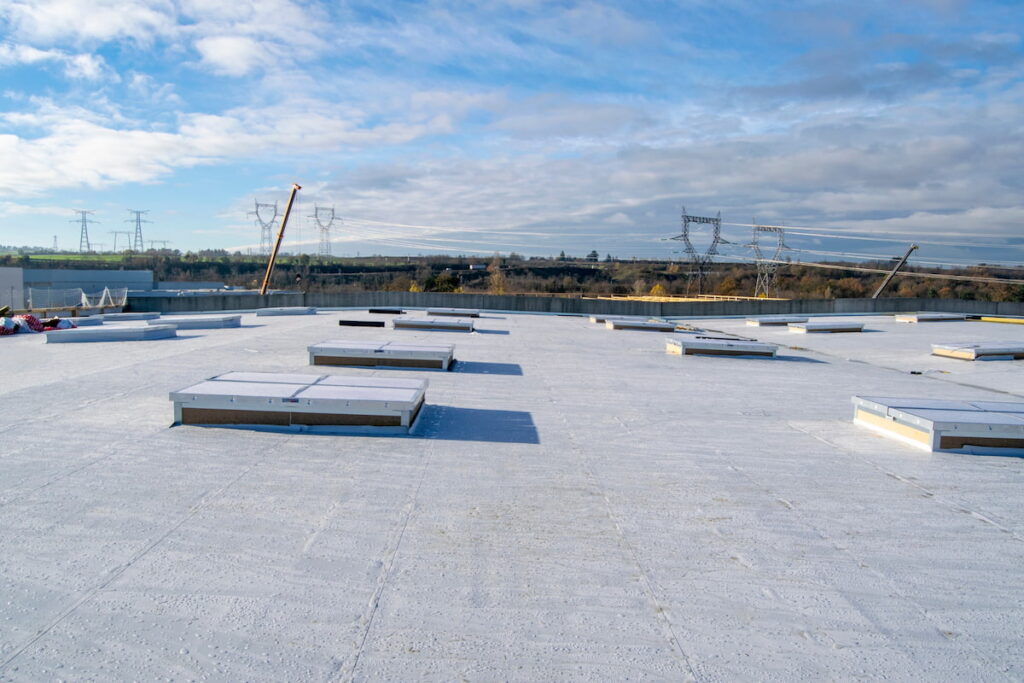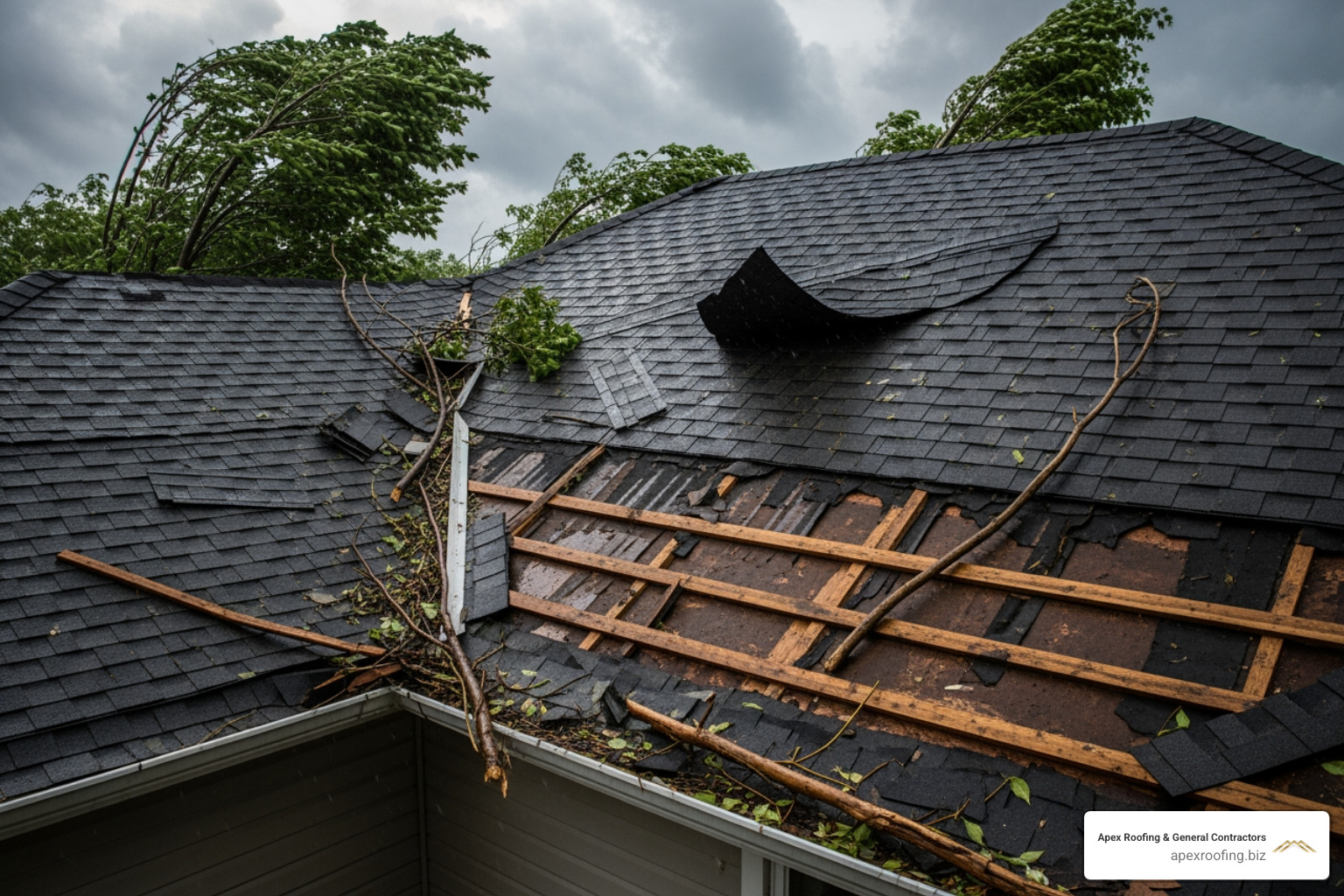
A commercial roof is more than just a protective covering—it’s a complex system with multiple layers working together to shield your business property from exposure to rain and storms. At Apex Roofing & General Contractors, we specialize in delivering top-notch commercial roofing services tailored to the unique demands of Austin’s climate.
Keep reading a we look into the anatomy of commercial roofs and explore the vital components that contribute to their resilience.
The Core Components of Commercial Roofs
1. Structural Roof Deck
The structural roof deck is the backbone of the entire roofing system. It supports the weight of the roof and everything above it and is typically made of thick-gauge steel, plywood, concrete, or other strong materials.
2. Vapor Barrier
Positioned on top of the roof deck, the vapor barrier plays a vital role in preventing moisture from infiltrating the interior of the building. This is particularly essential in spaces with air conditioning or areas prone to high interior moisture, like commercial kitchens.
3. Roof Insulation
Insulation is an important component for maintaining a comfortable interior temperature and reducing energy costs. Polyiso rigid foam board insulation is a common choice, with insulation effectiveness measured by the “R-value.”
4. Roof Cover Board:
Introduced in 2006 by the National Roofing Contractor Association (NRCA), cover boards are recommended for all commercial flat roofs. These non-combustible gypsum or glass mat boards enhance fire resistance, protect against hail impact, and provide a smooth surface for membrane installation.
5. Roof Membrane
The final layer, the roof membrane, acts as the weatherproof barrier. TPO (Thermoplastic Olefin) and EPDM (Ethylene Propylene Diene Monomer) single-ply membranes are popular choices due to their effectiveness. Other options include built-up roofing (BUR) and modified bitumen.
Additional Components of Commercial Roofs
- Edge Flashing: Where the roof cover meets the structure’s edge, edge flashing acts as the first protective barrier against strong winds.
- Penetration Flashing: Any roof penetrations, such as skylights, HVAC units, or vents, require flashing to maintain the integrity of the membrane.
- Fasteners or Adhesives: Fasteners or adhesives are crucial for holding the roofing system together, preventing it from blowing off the roof deck, and ensuring a watertight seal.
- Drainage: Commercial-grade gutters, scuppers, drains, and downspouts are essential for efficient water drainage, preventing water buildup on the roof.
- Roof Covering: Some roofs may have additional coverings like rock ballast, concrete pavers, or coatings, providing extra protection and insulation.
Regular Inspections for Longevity
Given the unique challenges posed by Austin’s climate, regular commercial roof inspections are paramount. At Apex Roofing & General Contractors, we recommend at least one thorough inspection per year—ideally two—to identify potential issues and ensure the roof’s longevity.
Investing in high-quality materials and partnering with experienced contractors like Apex Roofing & General Contractors is crucial for the durability and efficiency of a commercial roofing system in Austin, TX. Our commitment is to exceed expectations, making us a trusted name in the commercial roofing landscape. Get a roof inspection through our website or by calling 726-727-ROOF (7663).




